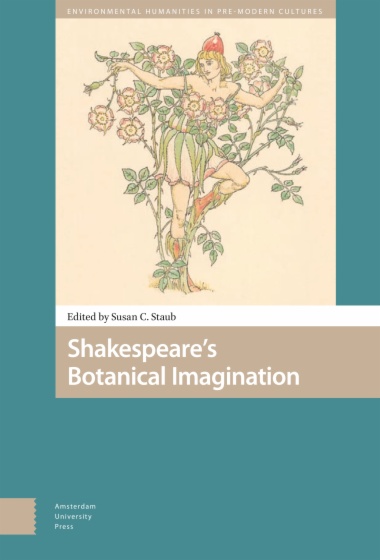Writing on the cusp of modern botany and during the heyday of English herbals and garden manuals, Shakespeare references at least 180 plants in his works and makes countless allusions to horticultural and botanical practices. Shakespeare’s Botanical Imagination moves plants to the foreground of analysis and brings together some of the rich and innovative ways that scholars are expanding the discussion of plants and botany in Shakespeare’s writings. The essays gathered here all emphasize the interdependence and entanglement of plants with humans and human life, whether culturally, socially, or materially, and vividly illustrate the fundamental role plants play in human identity. As they attend to the affinities and shared materiality between plants and humans in Shakespeare’s works, these essays complicate the comfortable Aristotelian hierarchy of human-animal-plant. And as they do, they often challenge the privileged position of humans in relation to non-human life.
- Cover
- Table of Contents
- Acknowledgments
- Introduction
- Part 1: Plant Power and Agency
- 1. Vegetable Virtues
- 2. The “idle weeds that grow in the sustaining corn”: Generating Plants in King Lear
- 3. Botanical Barbary: Punning, Race, and Plant Life in Othello 4.3
- Part 2: Human-Vegetable Affinities and Transformations
- 4. Shakespeare’s Botanical Grace
- 5. “Circummured” Plants and Women in Measure for Measure
- 6. Cymbeline’s Plant People
- 7. ‘Thou art translated’: Plants of Passage in A Midsummer Night’s Dream
- Part 3: Plants and Temporalities
- 8. Clockwork Plants and Shakespeare’s Overlapping Notions of Time
- 9. The Verdant Imagination in Shakespeare’s Sonnets
- 10. The Botanical Revisions of 3 Henry VI
- 11. Botanomorphism and Temporality: Imagining Humans as Plants in Two Shakespeare Plays
- Afterword
- Index
- List of Figures
- Figure 1: Griffiths’ hypothetical Shakespeare figure, circled. Title page. John Gerard, The Herball or Generall Historie of Plantes, by John Norton, 1597. Special Collections, Getty Research Institute, J. Paul Getty Trust, Los Angeles. Courtesy of HathiTr
- Figure 2: Frontispiece of Ralph Austen’s A Treatise of Fruit Trees (Oxford, 1653). This item is reproduced by permission of The Huntington Library, San Marino, California.
- Figure 3: Athanasius Kircher, “Sunflower Clock,” from Magnes siue de arte magnetica opvs tripartitvm. Rome: 1641. Photo courtesy of Special Collections, The University of Delaware Library, Museums and Press, Newark, Delaware.
- Figure 4: “Portable Drum Watch,” with both a mechanical dial and a sundial (1550–1570). From the workshop of Christoph Schissler. Courtesy of The Walters Art Museum, Baltimore.
- Figure 5: The title page of John Parkinson’s 1629 Paradisi in Sole. Woodcut by Christopher Switzer. Photo courtesy of Special Collections, The University of Delaware Library, Museums and Press, Newark, Delaware.
- Figure 6: Figure of Time with scythe, hourglass and clock. Martin Parker, “Take Time, While Time Is,” first printed in the last years of James I and reprinted in 1638. © British Library Board, The Roxburghe Ballads Collection, C.20.f.7.398–399.

